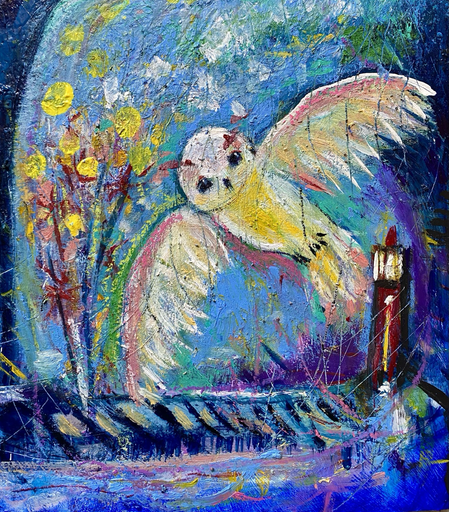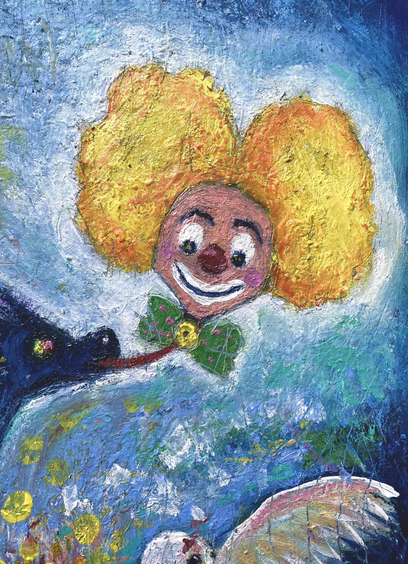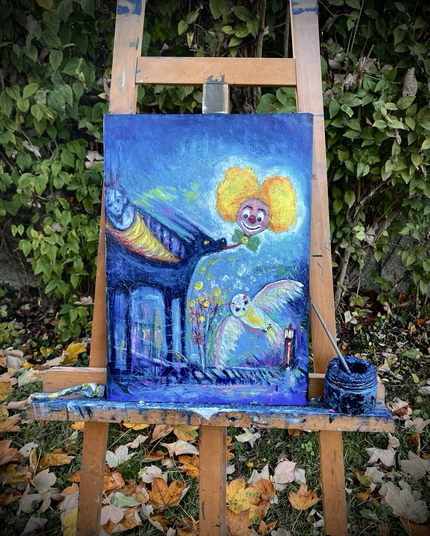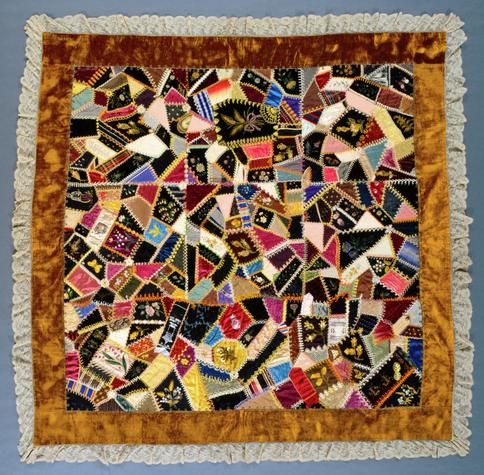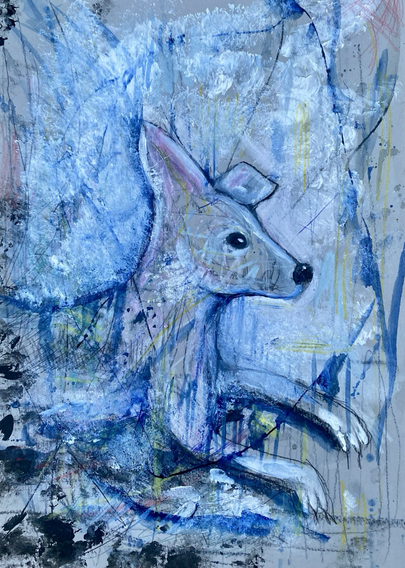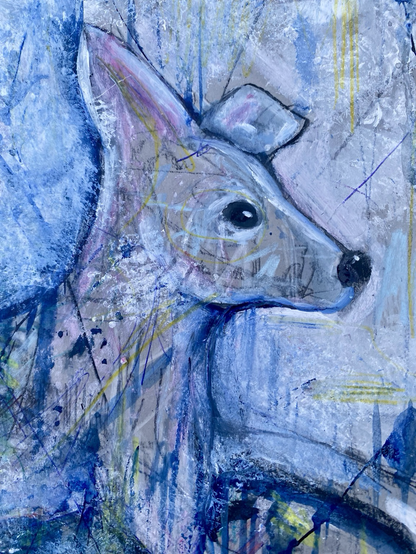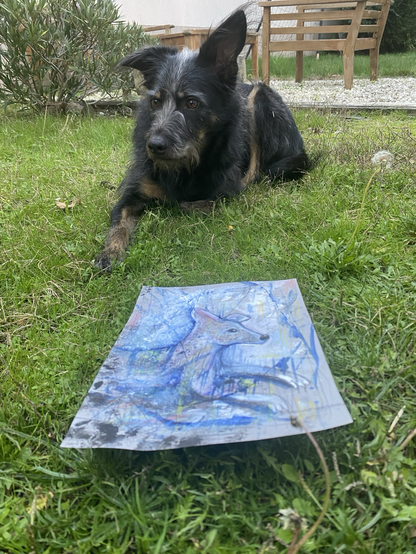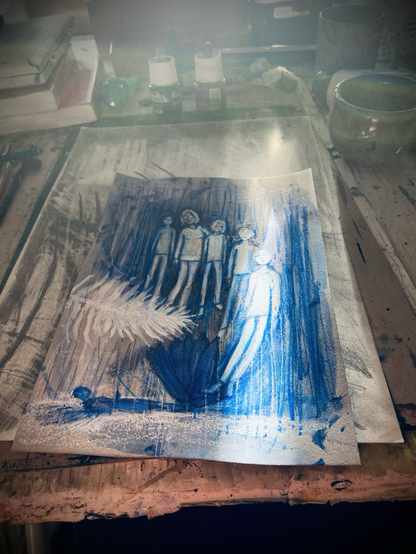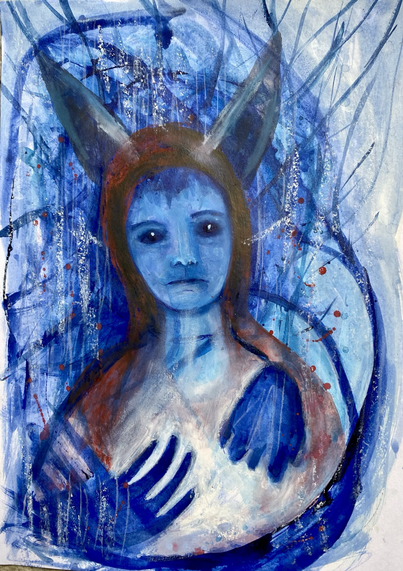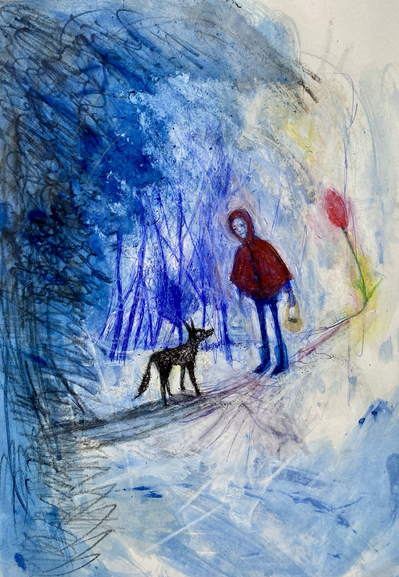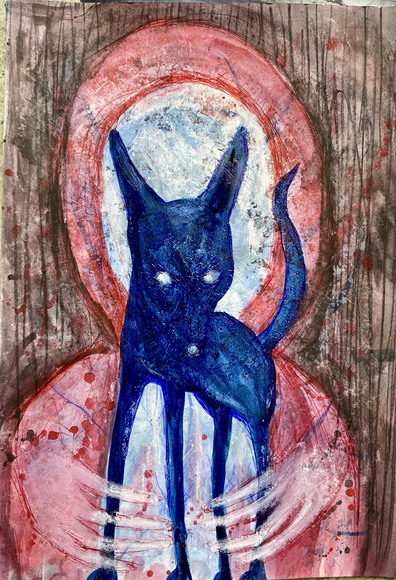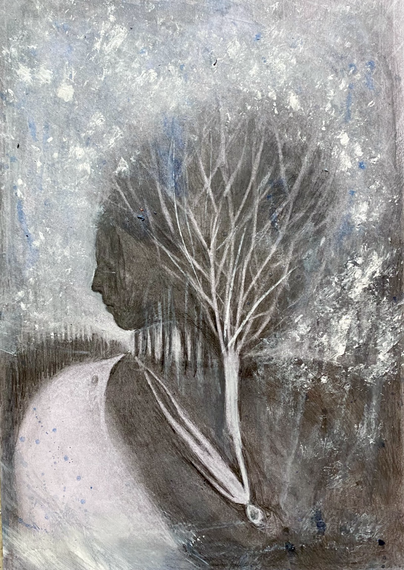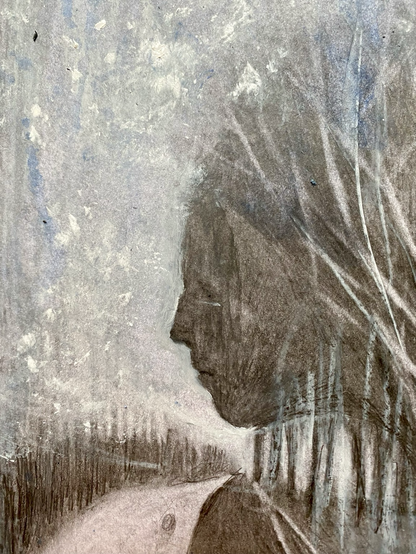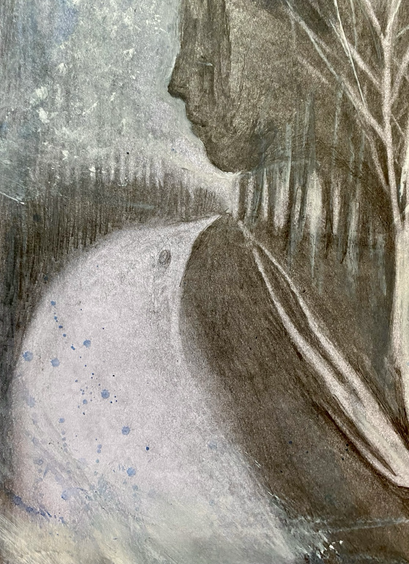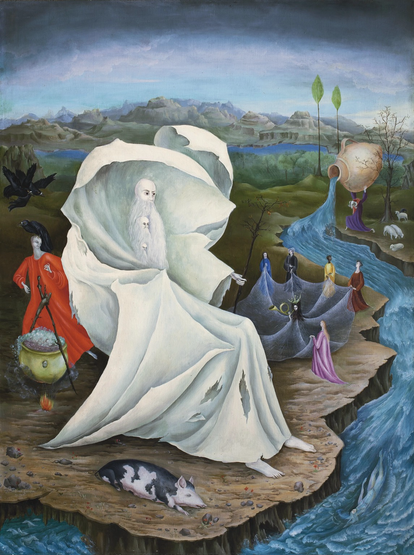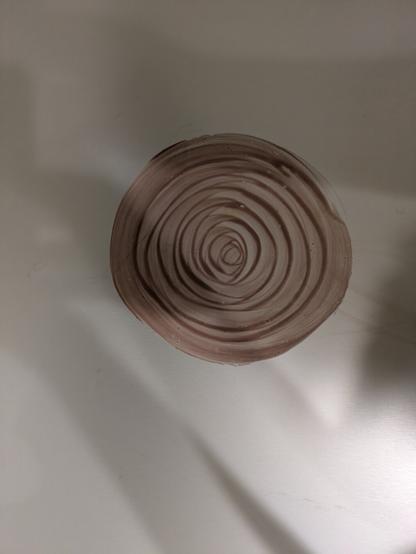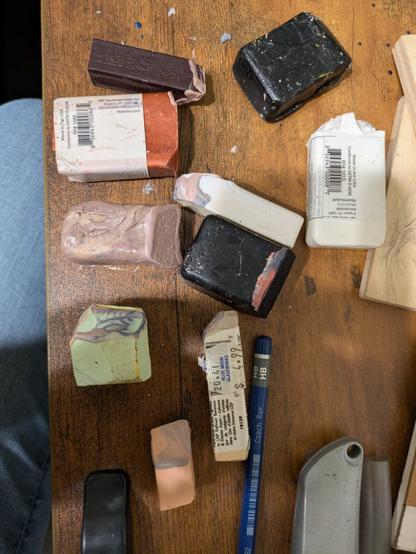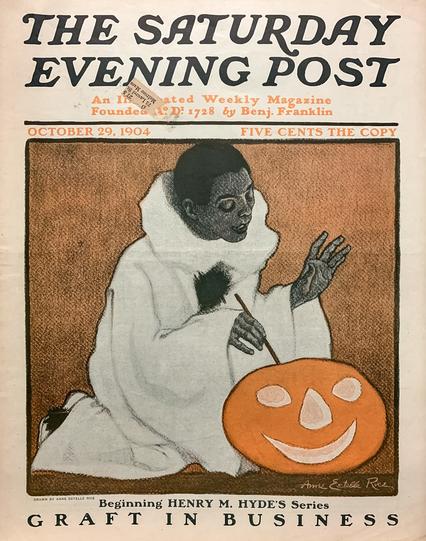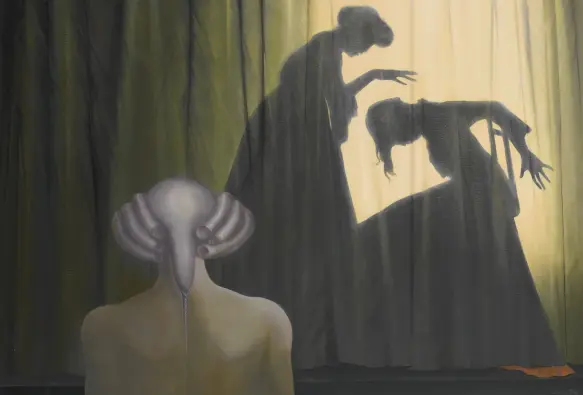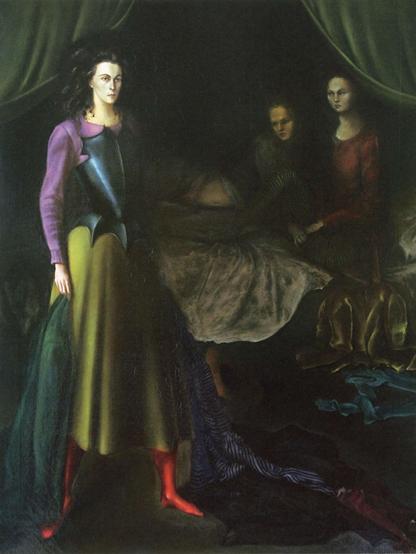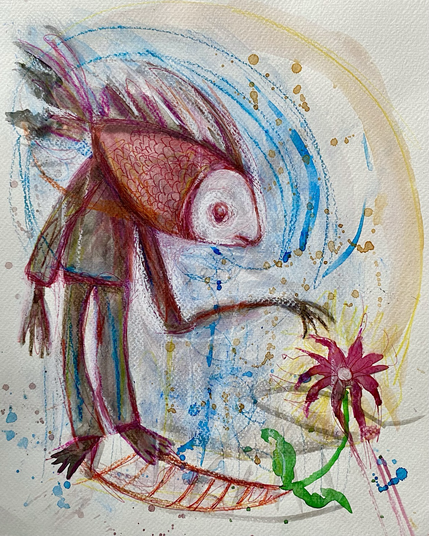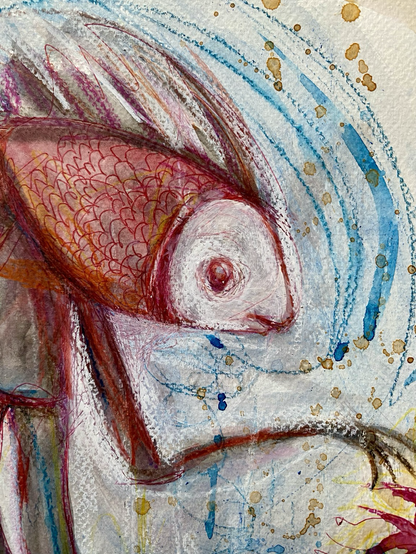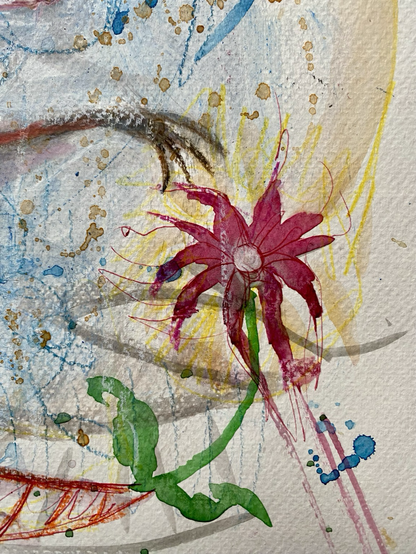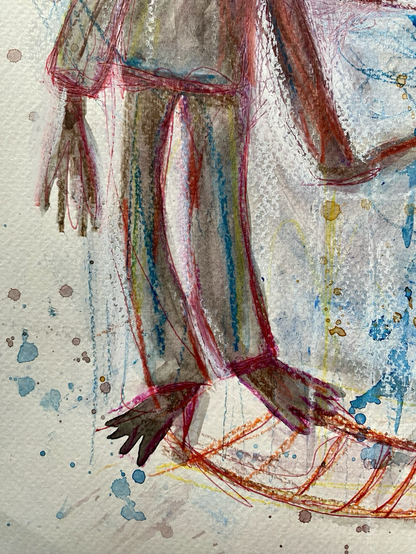Up to the abstract 🎨
👉 https://www.mercedes-soret.com/en/product-page/neptune-de-adam
🔅Oil painting on canvas inspired by sculpture🔅
#creativity #artist #painting #art #french #contemporaryart #MastoArt #inspiration #colors
#visualartist #womanartist #frenchartist #visualart #oilpainting #expression #videoart
#womanartist
🎨 Huile sur panneau aggloméré / oil on agglomerate panel : 33x46cm / 2025 🖼
#art #painting #womanartist #artwork #soniahivert #contemporaryart #artdaily #artist #arte #peinture #artgallery #contemporaryart #figuretivepainting #artfiguratif #contemporarypainting #mixedmedia #techniquemixte #clown #story #histoire
Keep warm with your art history post for today: Crazy Quilt, ca. 1887–1900, Louisa Joiner (1844–1911), silk, ribbons, lace, velvet, embroidered, heat transfer; 186.7 x 182.9 cm (73 1/2 x 72 in.), The Cleveland Museum of Art. More info in ALT. #art #arthistory #fiberart #womanartist #womenartists #quilting
“And what is life? A crazy quilt;
Sorrow and joy, and grace and guilt,
With here and there a square of blue
For some old happiness we knew;
And so the hand of time will take
The fragments of our lives and make,
Out of life's remnants, as they fall,
A thing of beauty, after all.
— Douglas Malloch, “The Romance of the Patchwork Quilt in America.”
By Mary Cassatt (1844-1926), Baby John Nursing, ca. 1908, pastel on canvas, 32 x 25 ¾ in. (81.3 x 65.4 cm), photo: Christie’s New York, 19 Nov 2014. More information in ALT. #arthistory #womanartist #womenartists #art
From the lot essay: “Baby John Nursing, which captures the tenderness and mutual bond of a young woman and her infant, is exemplary of the confident yet sensitive manner in which Mary Cassatt executed her mature pastels. While Cassatt's work in the 1870s had reflected her interest in the experience of modern women in Parisian society, in the 1880s her emphasis began to shift from the public to the private domains of women's lives, and thus to the quiet, intimate moments spent within the domestic realm. Depictions of motherhood, largely comprised of simple, daily interactions between mothers and their children, were a natural outcome of Cassatt's movement into the private sphere, as these shared moments played a significant role in women's experience of modern life…
In pastels such as Baby John Nursing, Cassatt sought to capture, celebrate and elevate the intimate, hidden scenes of women's domestic life. Her sophisticated approach to the subject of motherhood was praised and distinguished her from her contemporaries. "She saw herself as a standard-bearer for the new freedom in art that had been won by the Impressionists, and was seen that way by others." (N.M. Mathews, Mary Cassatt, New York, 1994, p. 267) Cassatt's ability to convey the inimitable tenderness often present in a mother's interaction with her children while creating paintings that are simultaneously modern and traditional instills masterworks such as Baby John Nursing with a timeless appeal.”
Gradual appearance…of the line 🎨
👉 https://www.mercedes-soret.com/en/product-page/inspir%C3%A9-de-cl%C3%A9o-de-m%C3%A9rode-d-alexandre-falgui%C3%A8re
🔅Oil painting on canvas inspired by sculpture🔅
#creativity #artist #painting #art #french #contemporaryart #MastoArt #inspiration #colors
#visualartist #womanartist #frenchartist #visualart #oilpainting #expression #videoart
✨Votre animal de compagnie, si vous pouviez le dessiner, vous pourriez le faire sans le regarder ! Comme ce que j’ai fait. 🙃Même quand il n’est pas là, il est là quand même. ❤️Sans le contrôler, il est dans mes créations. Avec ce dessin spontané cela montre à quel point : Je le connais par cœur ! Avec son oreille droite et l’autre pas. ❤️Son regard très concentré lorsqu’il guette les passants devant chez lui.
#art #dessin #draw #drawing #drawingart #figurativeart #artfiguratif #womanartist #artwork #soniahivert #contemporaryart #illustration #artgallery #artdaily
#artist #dessinfiguratif #chien #dog #portrait #inspiration
Un dessin sans explication qui a sa propre histoire… sans aucun doute. Il parle de personnes, de plumes et d’ange… avec toujours ce bleu qui les enveloppent…
🖍️ Technique mixte sur papier/ mixedmedia on paper / 21x29,7cm /2025
.
.
.
#art #dessin #draw #drawing #drawingart #figurativeart #artfiguratif #womanartist #artwork #soniahivert #contemporaryart #illustration #artgallery #artdaily
#artist #dessinfiguratif #bleu #blue #inspiration
Invocation of chimera 🎨
👉 https://www.mercedes-soret.com/en/product-page/mascaron-de-hercule-strasbourg-france
🔅Oil painting on canvas inspired by sculpture🔅
#creativity #artist #painting #art #french #contemporaryart #MastoArt #inspiration #colors
#visualartist #womanartist #frenchartist #visualart #oilpainting #expression #videoart
🌃Que font, et sont, les lieux quand personne n’y est plus ?
✨La Solitude les enveloppent de ses camaïeu de bleu. Voilà ce que j’ai représenter le plus spontanément possible. 💫
🎨 Huile sur panneau aggloméré / oil on agglomerate panel : 33x46cm / 2025 🖼
#art #painting #womanartist #artwork #soniahivert #contemporaryart #artdaily #artist #arte #peinture #artgallery #contemporaryart #figuretivepainting #artfiguratif #contemporarypainting #paysage #blue #bleu #arbre #tree #silence #oilpainting
The french touch🎨
👉 https://www.mercedes-soret.com/en/peinture
🔅Oil painting on canvas inspired by sculpture🔅
#creativity #artist #painting #art #french #contemporaryart #MastoArt #inspiration #colors
#visualartist #womanartist #frenchartist #visualart #oilpainting #expression #videoart
Le Petit Chaperon Rouge a pris sa place dans mes cheminements dans une version revisitée.
Ici, la forêt peut sembler effrayante mais elle est une véritable barrière protectrice qui mettrait en garde l’enfant de ne pas y aller. J’avais envie de montrer une fillette rebelle qui devient menace face au loup. Une fillette qui a conscience qu’elle grandit et qui se retrouvera sans protection, parfois sans secours, autre qu’elle-même.
Résultat : elle y arrive, elle grandit.
#art #dessin #draw #drawing #drawingart #womanartist #artwork #soniahivert #illustration
#artist #pendrawing #traditionalart #lepetitchaperonrouge #conterevisité #LittleRedRidingHood
🖍️Ce dessin revient de très loin, tâché, modifié, repris, effacé, puis taché de nouveau par maladresse à force de travailler plusieurs dessins en même temps. Résultat : faire avec cette tâche, l’exploiter et en rajouter même.
💫Et si de nos erreurs pouvait émerger quelques infimes beautés ?💫 qu’en pensez-vous ? ❓
…
🖍️ Technique mixte sur papier/ mixedmedia on paper / 21x29,7cm /2025
.
.
.
#art #dessin #draw #drawing #drawingart #figurativeart #artfiguratif #womanartist #artwork #soniahivert #contemporaryart #illustration #artgallery #artdaily
#artist #dessinfiguratif #landscape #paysage #pendrawing #traditionalart #poetry #poesie #nature
By Leonora Carrington (1917-2011), The Temptation of St. Anthony, 1945, oil on canvas, 48 by 35 3/4 in. (122 by 91 cm), photo: Sotheby’s New York, 24 November 2014. #arthistory #womenartists #womanartist #painting #oilpainting
Excerpt from the catalogue note: ‘First recorded by Athanasius of Alexandria, the Temptation of St Anthony details the actions, teachings and many sufferings of Anthony the Great, an Egyptian, and one of the early Church Fathers. Inspired by a phrase in the Gospel of Matthew: "If you want to be perfect, go, sell what you have and give to the poor, and you will have treasures in heaven; and come, follow Me," the Tempation of St. Anthony became a popular legend in thirteenth-century Europe. Many of the more notable examples appear to deal with a passage in which Anthony, having recently left his parents and all of his worldly goods to pursue the life of a monk, descends into a cave where he is tempted by demons.’
Gradual appearance…of the colors 🎨
👉 https://www.mercedes-soret.com/en/product-page/louise-brongniart-de-houdon
🔅Oil painting on canvas inspired by sculpture🔅
#creativity #artist #painting #art #french #contemporaryart #MastoArt #inspiration #colors
#visualartist #womanartist #frenchartist #visualart #oilpainting #expression #videoart
Your art history post for today is actually illustration history: by Anne Estelle Rice (1877–1959), cover of The Saturday Evening Post, October 29, 1904, Halloween issue. #arthistory #illustrationhistory #illustration #womanartist #womenartists
From The Saturday Evening Post: “Anne Estelle Rice (1877–1959) was born in Conshohocken, Pennsylvania, and studied art at the School of Industrial Art of the Pennsylvania Museum as well as the Pennsylvania Academy of Fine Arts. She was an illustrator for the most popular magazines of the day, including Collier’s, Harper’s, and The Saturday Evening Post.
In the early 1900s, she spent time in Paris and turned to painting, where she created art in the post-impressionist, and then Fauvist, styles. Department store owner John Wannamaker commissioned her to paint seven murals for his flagship Philadelphia store, where they were displayed until the store was remodeled in the 1950s.
Rice married theater critic Raymond Dray in 1913. They lived in England where Rice became involved with designing theater costumes and sets. Rice painted three covers for The Saturday Evening Post.”
By Leonor Fini (1907-1996), Outre songe (Beyond dream), 1978, oil on canvas, 35 1/8 by 51 1/4 in. (89.2 by 130.2 cm), photo: Sotheby’s New York, 15 September 2015. "I don't paint to calm. The paintings are disturbing; I know it." ~ Leonor Fini #arthistory #womanartist #womenartists #painting #art
Up to the abstract 🎨
👉 https://www.mercedes-soret.com/en/product-page/homme-narquois
🔅Oil painting on canvas inspired by sculpture🔅
#creativity #artist #painting #art #french #contemporaryart #MastoArt #inspiration #colors
#visualartist #womanartist #frenchartist #visualart #oilpainting #expression #videoart
Your art history post for today: by Leonor Fini (1908-1996), The Alcove: An Interior With Three Women, 1939, oil on canvas, The Edward James Foundation Limited. More in ALT. #arthistory #womanartist #womenartists #Art
From Weinstein Gallery: “ Fini was born in Argentina in 1907. Her mother spirited her away to her Italian homeland of Trieste. Fini was disguised as a boy whenever she left home to foil the kidnap attempts of her father. Raised by intelligent women and artistic personalities, it was not long before she decided to become an artist. By the time she relocated to Paris in 1931, she was already an intimate of Giorgio de Chirico and his circle. In Paris she was quickly 'adopted' by Max Ernst and the Surrealists that surrounded him. Fini became a sensation not only as an artist but also as a personality. She lived life like an actor in a play, creating a persona of drama, mystery and intrigue. The list of people she knew, collaborated with, or who were influenced by her over the following decades is itself a remarkable inventory of the thinkers and artists of the 20th century: Jean Cocteau, Man Ray, Leonora Carrington, Salvador Dalí, Joseph Cornell, Dora Maar, Anna Magnani, Albert Camus, Jean Genet, Federico Fellini, John Huston, and Georges Bataille, to name only a few. Fini came to incorporate many different lines of inquiry into her art. These were questions of beauty and age; of dark figures in conference that emerge out of murky waters and mottled landscapes; of an inexplicable silence that persists among those who attempt communication; and of the true nature of love and sex. Very few artists could be as simultaneously frank and enigmatic over a seven-decade career.”
Dessin improvisé et improbable
🖍️ Technique mixte sur papier/ mixedmedia on paper / 21x29,7cm /2025
.
.
.
#art #dessin #draw #drawing #drawingart #figurativeart #artfiguratif #womanartist #artwork #soniahivert #contemporaryart #illustration #artgallery #artdaily
#artist #dessinfiguratif #landscape #paysage #pendrawing #traditionalart #crazyart #nature #strangerart #bizarreart #curiosite

